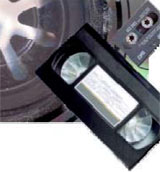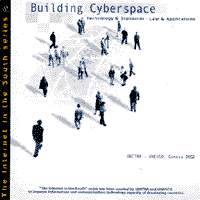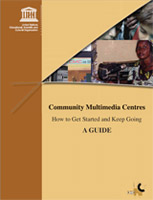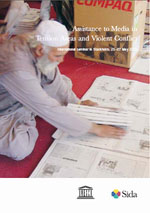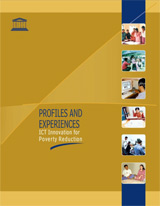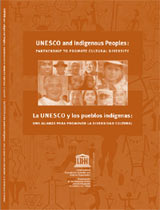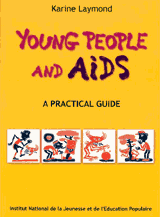A revision of the Philosophy of Audiovisual Archiving published by UNESCO in 1998. This revised and renamed document reflects the changes that have occured in the audiovidual archiving field, in the intervening period ranging from the challenges of digitization and technological changes.
Publication year: 2004
Publication year: 2004
Prepared by the Commonwealth Broadcasting Association (CBA) with support from UNESCO, the Guidelines presented in this publication are an attempt to help broadcasters find their way through the maze and help them identify and adopt good practice that ensures free and fair coverage.
Publication year: 2004
A practical guide to procurement of technical equipment for community media institutions
Publication year: 2004
The kit, consisting of an interactive CD–ROM with a printed handbook, develops interest, knowledge and skills of journalists and other media professionals in writing, reporting and investigating the EFA issues and helps them to create stories from dull and dry statistics and bring the EFA debate to the center stage.
Publication year: 2004
UNESCO has, since 2000, supported a number of initiatives with the Naledi3d Factory that have explored the potential of Virtual Reality (VR) as a learning tool in Africa, to date in Ethiopia, South Africa and Uganda (summarized in the box). In order to define a way forward in this project area, UNESCO commissioned this report, which evaluates the comparative advantages of applying multimedia and interactive 3D tools to the learning environment.
Publication year: 2004
There are growing numbers of grass-root communication and information service providers in the developing countries today. They are operating community radio stations, multipurpose telecentres, information centres, community learning centres and community multimedia centres (CMCs) that already combine both radio and telecentre facilities. This book is intended to be of use to all those wanting to become involved or already involved in such initiatives.
Publication year: 2004
This well-established book has been revised and updated to reflect recent developments in the field of human rights. The first part responds to 113 questions on the topic. In the second part, the 30 Articles are quoted and explained, including background information and examples. The book also includes notes that give more detailed information about individual states and their position.
Publication year: 2004
In May 2003, UNESCO and Sida jointly organized a seminar on ”Assistance to Media in Tension Areas and Violent Conflict.” This booklet is a compilation of the discussion papers produced for the seminar, reflecting the outcomes of the discussions.
Publication year: 2004
The World Press Freedom Day in 2004 was dedicated to the theme “Support to media in violent conflict and countries in transition.” This book explores various responses to this theme, which were presented at the UNESCO-sponsored conference in Belgrade marking Press Freedom Day.
Publication year: 2004
Multimedia Training Kit (MMTK) is a comprehensive suite of open-access, interactive, learning modules covering organizational, management, content production and issue-based training, for community multimedia centres (CMCs), community radio stations and telecentres. Its production is coordinated by the UNESCO-led consortium of partners. It can be downloaded from the ItrainOnline partners’ website.
Publication year: 2004
This report summarizes the conclusions of research conducted by Index on Censorship during a three month study of Iraqi media development issues conducted on behalf of UNESCO. It outlines the objectives and basic methodology of the research and aims to provide background to the study process.
Publication year: 2004
This report illuminates the politics of the Information Society through focussing on the dynamics surrounding free expression and privacy. Many of the contentious policy areas in the Information Society hinge on privacy and free speech.
Publication year: 2004
UNESCO has a long history supporting information and communication development in Asia. A considerable emphasis is being placed on the potential of new information and communication technologies (ICT) to positively impact on efforts to reduce poverty.
Publication year: 2004
Publication year: 2004
This publication pays tribute to the significant place that indigenous cultures occupy in the world’s cultural landscape. The information booklet explains UNESCO’s vision, strategy, programme and mechanisms regarding intercultural dialogue and partnerships with indigenous peoples.
Publication year: 2004
This handbook contains useful tools and data aimed at journalists and media experts, to allow them to provide better information on HIV/AIDS, so that people can fully understand the danger of HIV/AIDS and how to prevent it.
Publication year: 2004
This book is designed for primary and secondary school teachers, youth leaders in voluntary organization and radio and for all those interested in working on HIV/AIDS preventive programmes targeting young people. It provides educators with up-to-date and accurate information on AIDS, in order to enable them to devote a class or an activity to the topic.
Publication year: 2004





